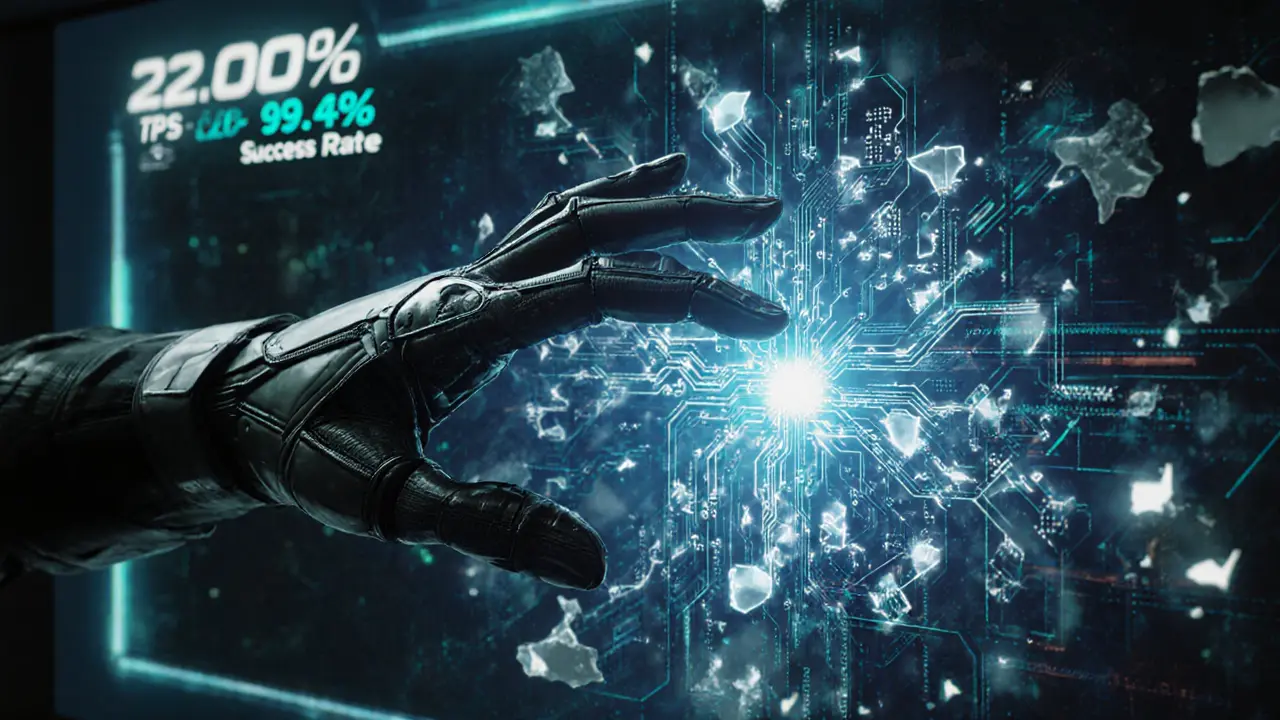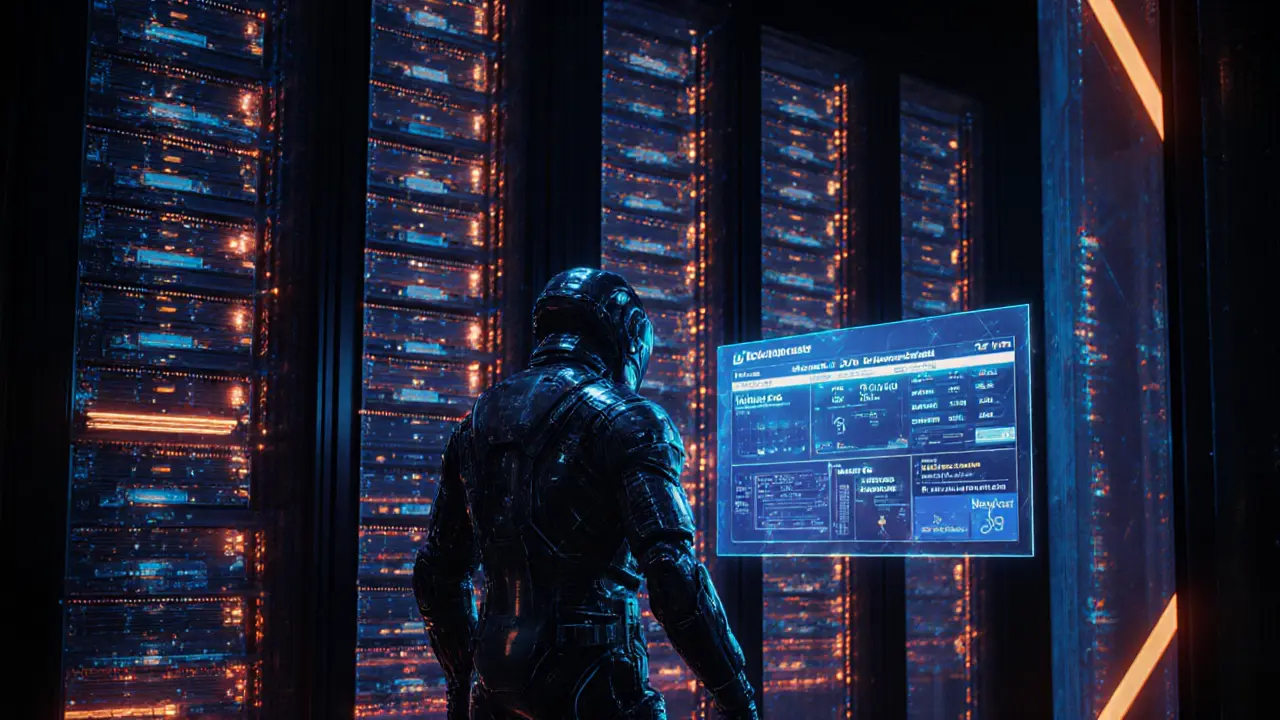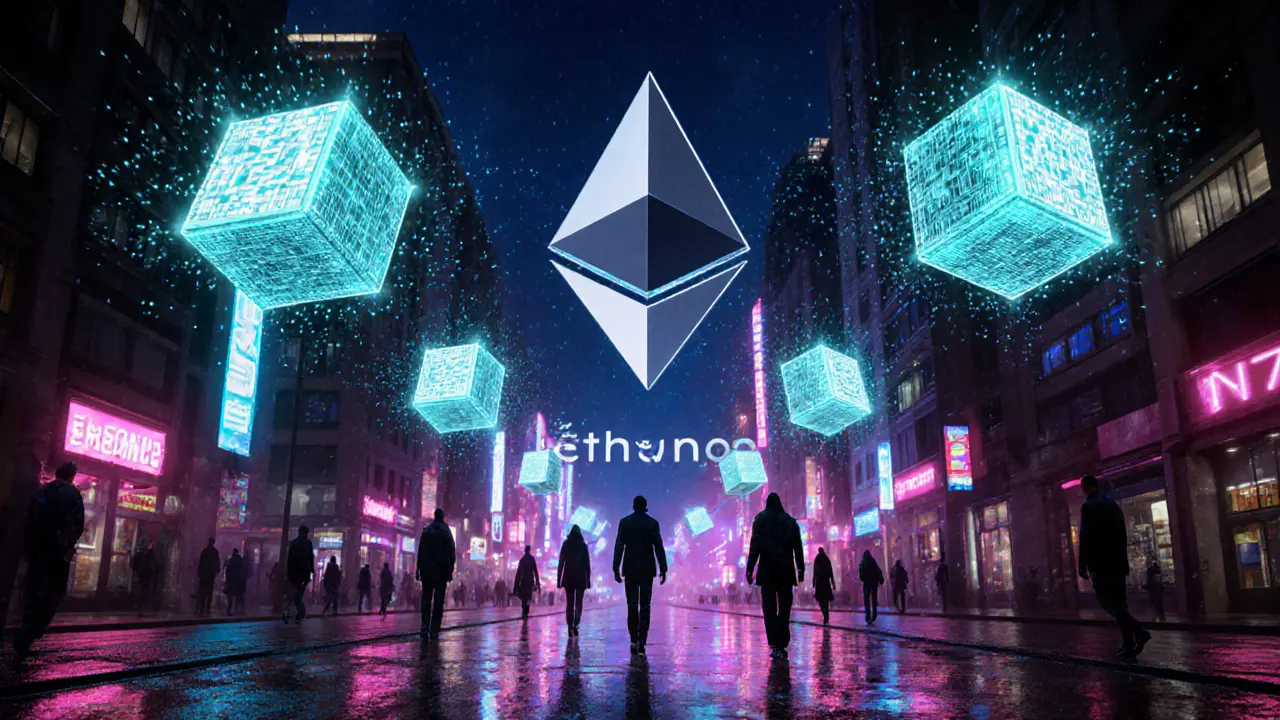ZK Proof Type Calculator
Your Project
Why ZKPs Matter
Zero-knowledge proofs let you verify transactions without revealing sensitive data. This enables:
ZK Proof Comparison
zk-SNARKs
zk-STARKs
Imagine proving you’re over 18 without showing your ID. Or verifying you have enough money to buy something-without revealing your bank balance. That’s not science fiction. It’s zero-knowledge proof (ZKP), and it’s already reshaping how blockchains work. By 2025, ZKPs are no longer just a crypto curiosity. They’re the backbone of scalable, private, and compliant blockchain systems. And if you’re still thinking blockchain is all about Bitcoin and meme coins, you’re already behind.
What Zero-Knowledge Proofs Actually Do
At its core, a zero-knowledge proof lets one party prove something is true without revealing anything else. Think of it like a lockbox. You can prove you have the key without showing the key. In blockchain terms, this means you can verify a transaction is valid-without exposing who sent it, how much was sent, or even what the transaction was for.
This isn’t theoretical. ZKPs were first described in a 1985 paper by Shafi Goldwasser, Silvio Micali, and Charles Rackoff. But it wasn’t until 2016, when Zcash launched using zk-SNARKs, that the world saw ZKPs in action. Today, zkSync Era, Starknet, and Polygon zkEVM are processing millions of transactions daily on Ethereum’s mainnet. These aren’t testnets. They’re live, scaling Ethereum while keeping user data private.
zk-SNARKs vs. zk-STARKs: The Two Paths Forward
Not all ZKPs are the same. Right now, two types dominate: zk-SNARKs and zk-STARKs. Each has trade-offs that affect speed, security, and who can use them.
zk-SNARKs are compact. A proof is only about 200 bytes-tiny compared to other methods. But they need a one-time trusted setup. If that setup is compromised, the whole system could be vulnerable. That’s why projects like zkSync and Polygon use them: they’re efficient, and the setup was done years ago with multiple parties involved to reduce risk.
zk-STARKs don’t need a trusted setup. That’s a big win for security. But their proofs are bigger-around 45KB. That means more data to store and verify. Starknet uses zk-STARKs because they prioritize trustlessness over raw speed. As hardware improves, this gap is shrinking. By 2025, NVIDIA’s new ZK Coprocessor could make zk-STARKs faster and cheaper than ever.
Here’s the real difference: zk-SNARKs are optimized for today’s needs. zk-STARKs are built for the future.
Why ZKPs Are Solving Blockchain’s Biggest Problems
Blockchains have always faced a trade-off: privacy vs. scalability vs. compliance. Before ZKPs, you could pick two. Now, you can have all three.
Take scalability. Ethereum handles about 15 transactions per second. zkSync Era processes 2,000 TPS. Starknet handles 1,500. That’s not a slight improvement-it’s a 100x leap. And they do it by bundling hundreds of transactions into one ZK proof, then verifying it all on Ethereum in seconds.
Privacy? ZKPs let you hide transaction details while still proving they’re valid. BlackRock tokenized $240 million in U.S. Treasuries on Ethereum using ZKPs. Investors were verified-without revealing their identities. That’s impossible with traditional public blockchains.
And compliance? The EU’s MiCA regulation now explicitly recognizes ZKPs as a legal way to protect privacy while meeting anti-money laundering rules. In the U.S., the SEC is still figuring it out. But institutions like HSBC are already using ZKPs to cut settlement times by 73% in gold trading-without exposing pricing data.

Where ZKPs Still Struggle
It’s not all smooth sailing. The biggest hurdle? Complexity.
Writing a ZK circuit isn’t like writing Solidity. You need to understand finite field arithmetic, elliptic curve cryptography, and circuit design. Most blockchain devs have never touched this stuff. GitHub reports over 427 open issues in zkSync’s framework related to circuit compilation errors. One developer on Reddit spent 117 hours debugging a single ZK circuit-only to cut gas costs by 97%.
Hardware is another bottleneck. Generating a complex proof still needs 16-32GB of RAM and multiple CPU cores. That’s fine for servers, but not for your phone. That’s changing. NVIDIA’s ZK Coprocessor, launching in Q1 2025, promises 50x faster proving times. If it delivers, smartphone-based ZK apps could become reality.
And then there’s cost. While Visa’s pilot cut ZK verification costs by 87%, most ZK transactions still cost more than regular ones. Dr. Eli Ben-Sasson predicts proving costs will drop below $0.001 per transaction by mid-2025. That’s the tipping point. Until then, only high-value use cases make sense.
Real-World Use Cases Already Live
ZKPs aren’t waiting for the future. They’re here.
In Estonia, 217,000 citizens voted privately in their 2024 municipal elections using ZK-based systems. Every vote was verified, auditable, and anonymous. No one knew who voted for whom. But the system proved every vote was legitimate.
On the supply chain side, companies are using ZKPs to prove goods passed safety checks without revealing supplier names or pricing. In healthcare, patient records can be verified for eligibility without exposing diagnoses.
And cross-chain privacy? zkBridge launched in July 2024, letting users move assets between Ethereum and Bitcoin privately. That’s never been done before. The verification success rate? 99.8%.

Market Growth and Who’s Leading
The ZK market exploded from $3.2 billion in 2023 to $21.1 billion by May 2024. That’s a 559% jump in just 18 months.
By transaction volume, Polygon zkEVM leads with 38%, followed by Starknet at 29%, and zkSync at 22%. But the real story isn’t just the top three. Eleven new ZK-focused projects raised funding in Q3 2024 alone. One token presale hit $47 million.
Eighty-three Fortune 500 companies are now testing ZK tech. Financial services lead at 42%, followed by healthcare (28%) and supply chain (19%). This isn’t crypto bros anymore. This is banks, insurers, and logistics giants betting billions on ZKPs.
What Comes Next: The Road to 2027
By 2027, ZKPs won’t be a layer you add. They’ll be the default.
SuperEx News predicts 70% of blockchain apps will use ZK architecture by then. That means:
- Your DeFi wallet will prove you’re eligible for a loan without showing your balance.
- Your NFT purchase will be private, but still verifiable on-chain.
- Your smart contract will verify your identity without storing your data.
But there’s a catch. McKinsey warns that if ZK proving doesn’t become 90% more energy-efficient, mass adoption will stall. Right now, proving a single complex transaction uses as much power as running a laptop for hours. That’s not sustainable at scale.
The solution? Hardware. Specialized chips. Better algorithms. And open-source circuit templates. Trail of Bits found that 37% of failed ZK projects in 2023 were due to overcomplicated circuits. The fix? Start simple. Use proven templates. Test incrementally.
Should You Care? Absolutely
If you’re using crypto today, you’re probably still on public chains where every transaction is visible. That’s fine for trading. But for anything real-banking, healthcare, voting, identity-you need privacy without sacrificing trust.
ZKPs deliver that. And they’re not coming. They’re already here. The question isn’t whether ZK technology matters. It’s whether you’re ready to use it.
What is a zero-knowledge proof in simple terms?
A zero-knowledge proof lets you prove you know something-like a password or that you have enough money-without revealing the thing itself. It’s like showing you have a key to a locked door without showing the key.
Are zero-knowledge proofs secure?
Yes, if implemented correctly. zk-SNARKs rely on a trusted setup, which can be a risk if compromised. zk-STARKs avoid that risk entirely. But even the best ZK systems can have bugs. A 2024 study found 63% of audited ZK circuits had critical vulnerabilities, mostly from custom code. Always use well-tested, open-source circuits.
Can I use ZKPs on my phone today?
Not yet for complex tasks. Generating ZK proofs still needs powerful hardware. But by 2025, NVIDIA’s new ZK Coprocessor and optimized algorithms could make smartphone ZK apps possible. For now, ZK apps run on servers or Layer 2 networks-you interact with them, but the heavy lifting happens off-device.
How do zk-SNARKs and zk-STARKs differ?
zk-SNARKs are smaller and faster but need a trusted setup. zk-STARKs are larger and slower but don’t need trust-they’re transparent and quantum-resistant. zk-SNARKs are used by zkSync and Polygon. zk-STARKs power Starknet. The choice depends on whether you prioritize speed or trustlessness.
Why are banks using zero-knowledge proofs?
Banks need privacy for compliance. ZKPs let them prove a client meets regulatory rules-like age or income-without exposing personal data. HSBC cut settlement times by 73% using ZKPs for gold trading. BlackRock tokenized $240 million in U.S. Treasuries with ZK-based identity checks. They’re not just saving money-they’re meeting legal requirements without risking leaks.
Is zero-knowledge technology only for blockchain?
No. ZKPs are used in voting systems (like Estonia’s), identity verification, secure cloud computing, and even AI model verification. But blockchain is the biggest driver right now because it needs both transparency and privacy-something ZKPs uniquely solve.

Hanna Kruizinga
November 1, 2025 AT 06:09Eric Redman
November 2, 2025 AT 12:30Mehak Sharma
November 3, 2025 AT 02:50Jason Coe
November 4, 2025 AT 07:00Brett Benton
November 4, 2025 AT 11:57David Roberts
November 6, 2025 AT 08:26Monty Tran
November 8, 2025 AT 01:39Beth Devine
November 8, 2025 AT 12:30Chris Strife
November 10, 2025 AT 03:20Brian McElfresh
November 10, 2025 AT 16:08Jessica Hulst
November 12, 2025 AT 09:21Kaela Coren
November 13, 2025 AT 23:17Nabil ben Salah Nasri
November 15, 2025 AT 15:14Josh Serum
November 15, 2025 AT 19:35Phil Higgins
November 15, 2025 AT 22:07Genevieve Rachal
November 16, 2025 AT 18:09Eli PINEDA
November 17, 2025 AT 22:44Debby Ananda
November 18, 2025 AT 02:05Vicki Fletcher
November 18, 2025 AT 15:10David James
November 19, 2025 AT 14:32